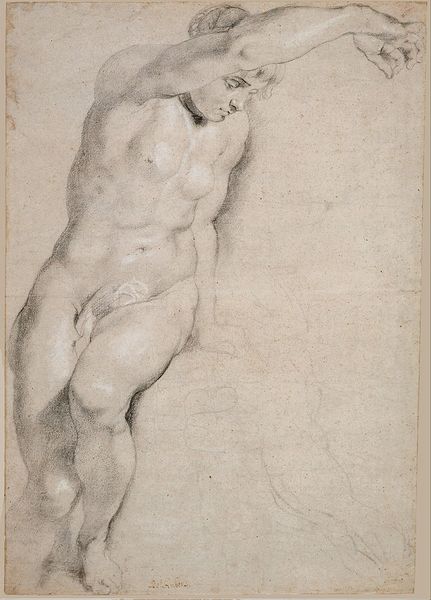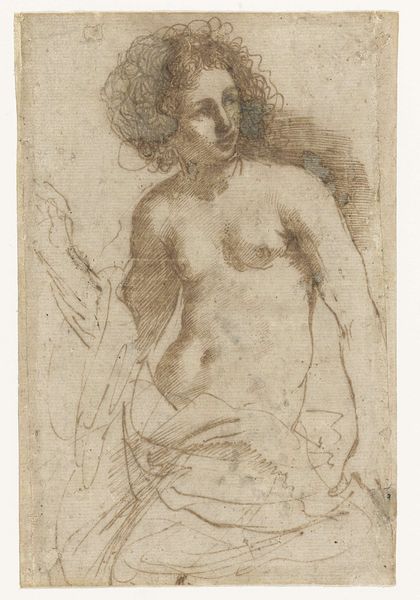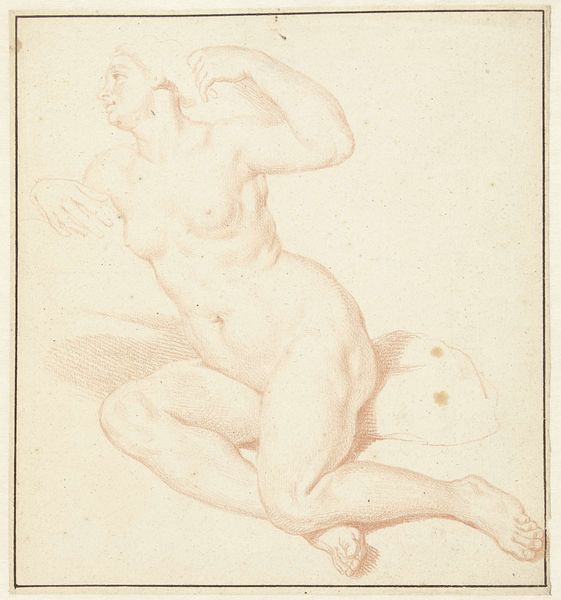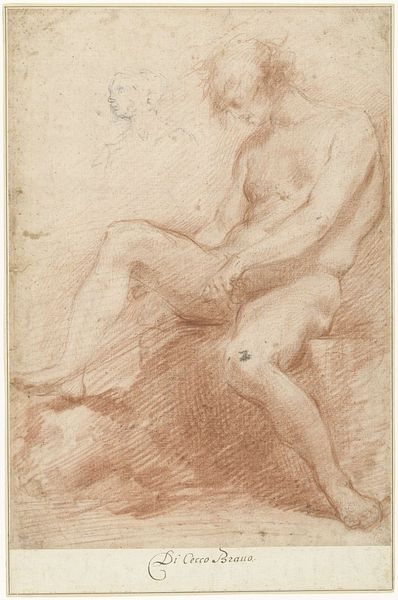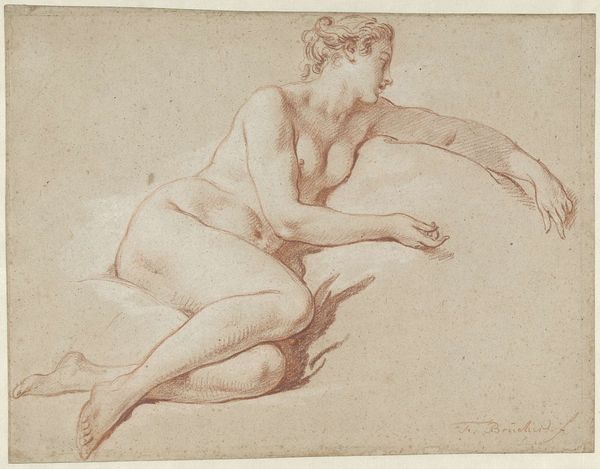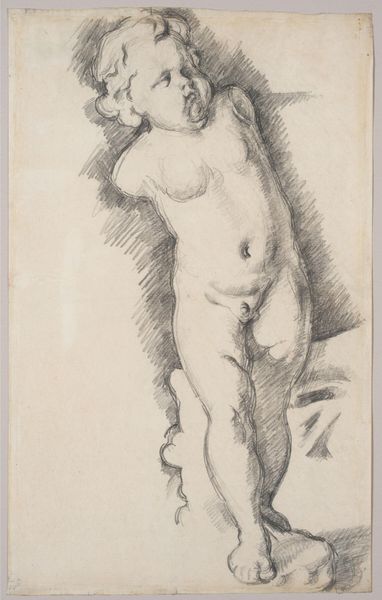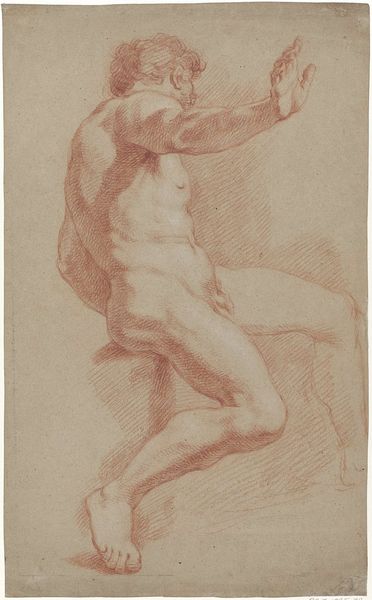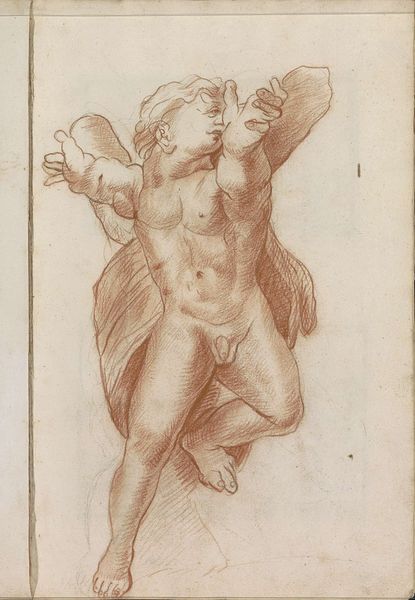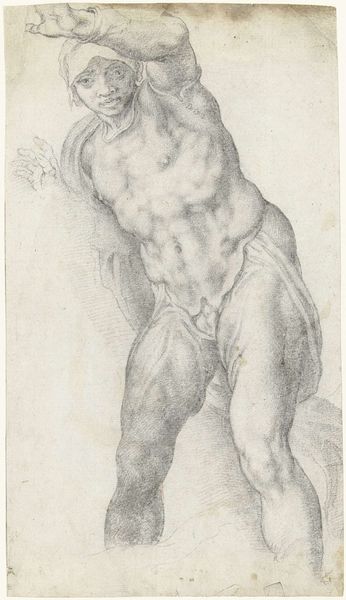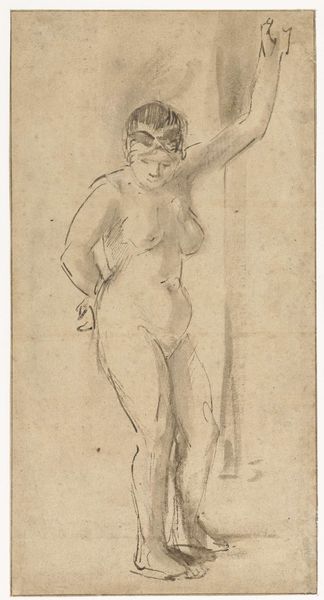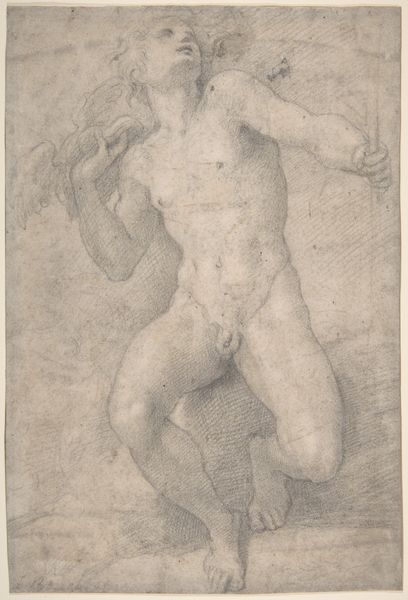
drawing, paper, pencil
#
pencil drawn
#
drawing
#
pencil sketch
#
charcoal drawing
#
figuration
#
paper
#
form
#
11_renaissance
#
pencil drawing
#
underpainting
#
pencil
#
line
#
pencil work
#
italian-renaissance
#
nude
Dimensions: height 199 mm, width 133 mm
Copyright: Rijks Museum: Open Domain
Curator: Look at the joyous energy in Agostino Carracci's "Flying Putto with Arms Raised," a drawing likely from the late 16th century, now held at the Rijksmuseum. Editor: My first impression? Vulnerable. There’s a fleshy, almost awkward quality to the cherub, a departure from idealized Renaissance figures. Curator: It is fascinating how the sketch is not merely about idealized beauty but captures something far more relatable in human or divine form. The "putto," as you see, is a motif deeply ingrained in Renaissance iconography; however, it usually signals divine love, doesn’t it? Editor: Usually. But here, something seems… suspended. Is it ascending, falling, or merely caught mid-flight? That uncertainty shifts the meaning away from the purely celebratory and towards a more liminal, existential state. Perhaps considering socio-political tensions might help understand the purpose and impact of this drawing? Curator: It does offer ambiguity, though, doesn’t it? I believe we are invited to embrace multiple readings of the putto. Consider the raised arms, too, a universal gesture of surrender, praise, or perhaps even seeking rescue. Editor: Exactly! And within the historical context of the late Renaissance, characterized by Counter-Reformation, such ambiguities resonated with anxieties around faith, agency, and the body, questioning the prevailing orthodoxies through the visual language of doubt and supplication. The drawing becomes not merely an aesthetic exercise but a profound statement about the crisis of its time. Curator: A crisis indeed, mirrored in its symbolism and technique! The beauty of it lies in the eye of the beholder; yet this interpretation only enhances the symbolic gravity, offering both artist and audience a glimpse into shifting spiritual landscapes. Editor: Yes, offering today’s viewers an important lens, because this flying figure encourages us to rethink power, hope, and meaning when facing uncertainty. I'd add that his somewhat irregular form and sketched face make him relatable to outsiders, those who feel marginalized even within institutions as supposedly inclusive as religion.
Comments
No comments
Be the first to comment and join the conversation on the ultimate creative platform.
